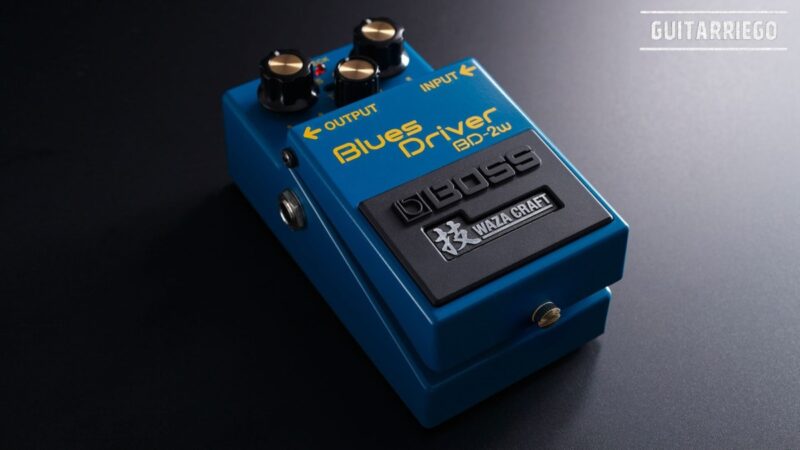Guitar frets: guide on wire sizes and materials and more
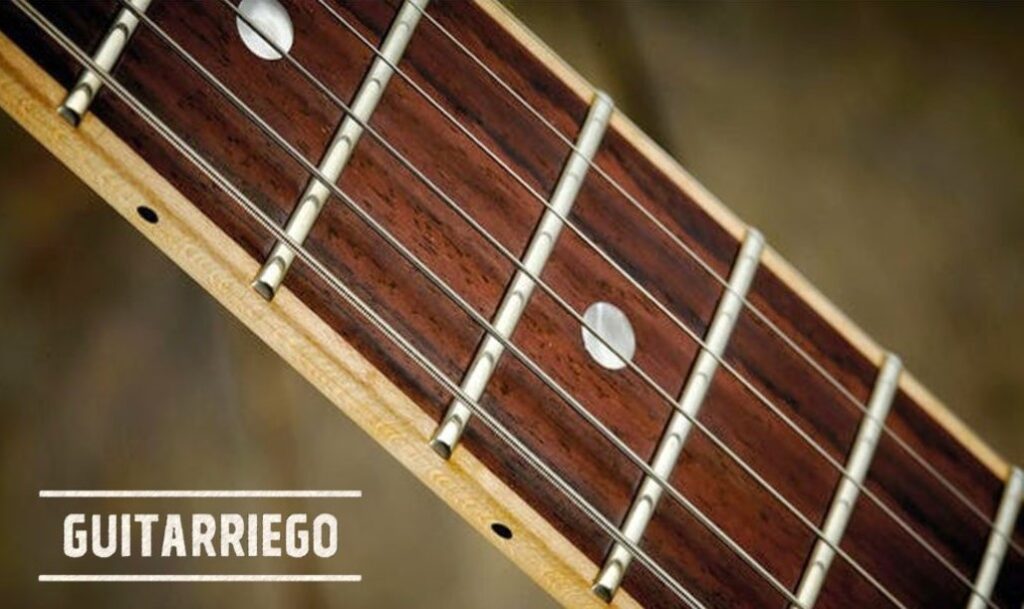
Guitar frets is an important part of the instrument that influences comfort and tone, we analyze everything about fret wire measurements and materials.
Frets and guitar
As you may already know, frets divide a fretboard into easy-to-see semitone intervals that tell us where the notes are. Unlike other string instruments such as the violin, cello, double bass and others, the guitar has frets that facilitate its execution.
Some guitarists have experimented with fretless guitars, like bass guitars, but without much success. One of the main reasons the guitar is fretted is because chords make up an essential part of guitar playing. Without frets, playing 6-note chords in tune would be really tricky.
Of course, the use of frets has its limitations, since it does not allow the use of microtones or exotic oriental scales, unless you use a Slide, which is nothing more than a moving fret controlled by one of our fingers. Fortunately, not many guitarists want to use microtones or oriental scales.
You may also be interested in know more about the parts of the electric guitar and importance of each.

History of frets
Fret Material: Bone to Metal
The first string instruments, and predecessors of the guitar, that had frets used gut strings, so it was common for the frets to be made of bone, as was the nut. Bone is strong enough for gut strings, but as wound metal strings were introduced, metal became the material of choice for luthiers for frets. Thus, today, most frets are made of approximately 18% nickel for durability and 80% copper for flexibility.
Fret Shape: Bar to Type “T”
The first metal frets were very different from those we know and use today. These first types of frets are commonly known as bar frets. Said name is because they are metal bars with flat sides, that is to say rectangular, that radiate at the top and are placed in the wider fret slots than those currently used.

The bar fret is still available today for restoration work on old or “vintage” classical or acoustic guitars. There are even acoustic guitarists who prefer the feel and look of the bar fret style for their acoustic and Spanish guitars.
The current ‘T fret‘ was patented in the 1920s by Clinton F. Smith. This fret soon became the industry standard, and remains so to this day. The letter ‘T‘ stands for “Tang“.
If you look at it from the side, the T-fret looks a lot like a mushroom. The herringbone fret is much narrower than a bar fret and was designed to fit into narrower slots on the fingerboard. The frets are held in place due to a friction fit, aided by tangs that help it grip the sides and prevent the fret from slipping out of the slot.

Measurements and sizes of guitar frets
Although most electric, Spanish/classical and acoustic guitar frets are now T-type frets, there are different sizes. Crowns vary in width and height, which will affect the way a guitar feels and its playability. Some guitarists may even feel like they can affect the tone of the guitar.
Check out this guide about Types of guitars: classical, acoustic, hollow-body or solid-body electric guitar.
Modern frets: tall and wide
High crowns can almost make a fingerboard feel like it’s been gently scalloped and make it easier to get your fingers under the strings. This allows you to bend and do vibratos in an easier and more controlled way. On the other hand, the disadvantages are that when you slide across the fretboard, you can feel the frets under your fingers more markedly and bothersomely, and that by pressing too hard on the string, you can affect the tension and with it the tuning of the string. For the latter, it is usually preferred that the high frets are also wider to be able to make the crowns with a more gradual curve, and soften them to the touch.
This style of frets are preferred by Rock and Shredders Lead guitarists. The most representative and largest size of frets is called Jumbo.
Traditional or vintage frets: low and narrow
While Fender traditionally uses thinner frets than Gibson, both measurements are thinner and lower than modern Jumbo frets. These frets feel smoother in the hand.
During the 1950s, many jazz musicians preferred ultra-low frets. The Les Paul Custom in those years was promoted as ‘The Fretless Wonder’. This makes a lot of sense since at that time it was not played with bendings.
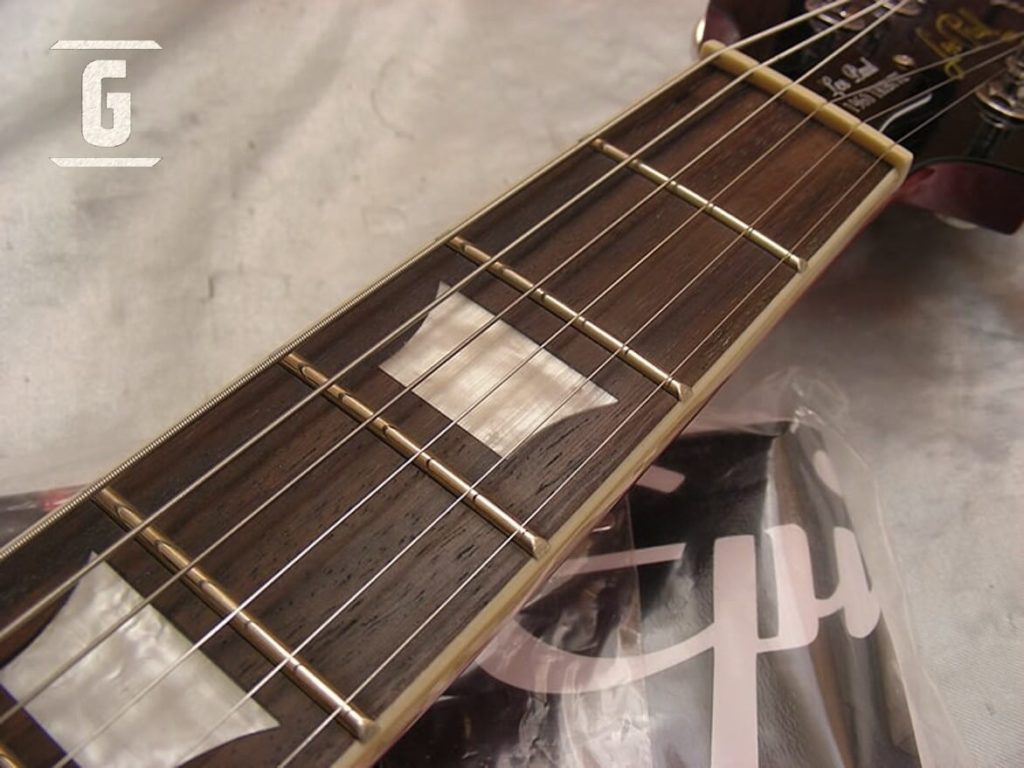
Fret dimensions
The measures normally specified are those of the crown, but sometimes it is also necessary to consider that of the tang. When re-fretting as well, it is advisable to measure the depth and width of the tang to determine if the new fret wire you wish to use will be compatible with the existing fret slots. While this is part of the luthier’s job, and will usually be ignored by the guitarist, it is important to keep in mind when dealing with expensive or vintage guitars.
When buying a guitar, it is important that you look at what frets it has. Since a guitar refretting job is somewhat expensive. You will often find the names of the size of the frets of a guitar as: “jumbo frets” or “medium jumbo frets“, “Narrow and tall“, among others. Therefore, below you can find in detail the main measurements, used by both Fender and Gibson.
Most popular guitar fret sizes
The main manufacturer of frets is Dunlop Manufacturing Inc., the main sizes you will see detailed below. They are identified by part number, name where applicable, width and height of the crown, they are, from smallest to largest:
- 6230: Also known as the ” Vintage Fret” measurement, this is the smallest fret found on older Fender necks (1.98 x 1.09mm / .078″ x .043″).
- 6150: «Vintage Jumbo» are wider but not as tall as 6230 or Vintage (2.59 x 1.07 mm / .102″ x .042″).
- 6105: also known as “Modern narrow and tall”, currently very popular (2.28 x 1.40 mm / .090″ x .055″). This is the main gauge used by Gibson and also heavily used by Fender.
- 6130: the popular «Medium Jumbo», they are taller but quite narrow (2.69 x 0.91 mm / .106″ x .036″).
- 6100: «Jumbo» or also «Modern Jumbo» is the largest fret available (2.79 x 1.40 mm / .110″ x .055″).
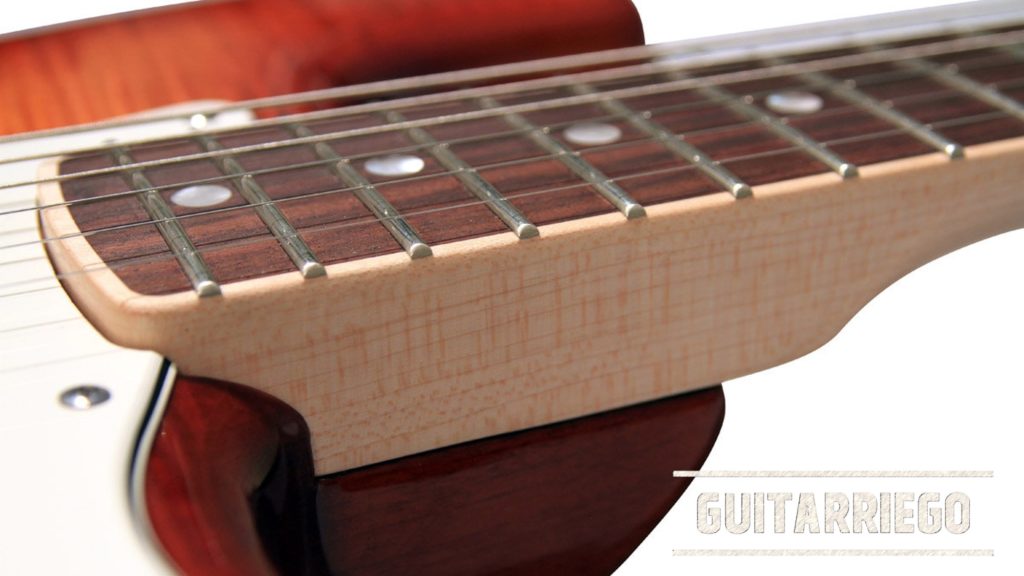
The refretting as a repair or as an improvement
Size is purely a matter of preference and comfort. Fret measurements or sizes can affect your playing style. Those who are used to playing the fretboard, usually prefer low to medium high frets, the 6130, 6150 or 6230 the ideal options. On the other hand, the 6100 jumbo fret can provide comfort when playing and tends to provide better sustain and facilitate bendings.
As we have seen, many early guitars came with low frets, since bending was not used in the early years of the guitar. However, guitar playing has evolved, and vintage guitars with ultra-low frets can make it difficult to play. For this reason, unless the guitars are original vintage instruments, it is well seen to make an “upgrade” by refretting with taller and wider fret wire on them.
You may also be interested in the best tips for upgrading an electric guitar.
The frets and tone of the guitar
There are many myths associated with fret size and its implication on tone. But the reality is that the material change is minimal and a well crowned and tight fret has a similar contact surface with the string. So arguing that thicker frets could add mass and stiffness to the neck is relative. Having said this from a theoretical point of view, we consulted guitarists who usually refret -change the frets- their guitars with large frets such as Jumbo, while some assured that the frets give the guitar more attack, others also consider that it also gives more sustain.
What it does affect most obviously is the material of the fret. Thus, harder frets, such as steel, provide more brightness to the tone of the guitar.
On the other hand, as we already talked about, the size and shape of the fret affects the way you play the guitar, therefore, it can affect your tone because it affects your personal style. Taller fret wire helps to play faster while you have to be more precise with how hard you press the strings so you don’t throw the notes out of tune.
Guitar fret materials
Nickel, silver guitar frets
As we have already seen, the vast majority of electric guitar frets are made with nickel silver, also known as German silver. Confusingly enough, there is actually no silver involved with “German silver”. Nickel silver is a ternary alloy composed of zinc, copper and nickel.
The proportions vary, but most frets contain about 18% nickel for durability and 80% copper to make it flexible enough and soft enough to be polished, shaped, and polished for use. Jescar’s NS18 frets, for example, are only 62% copper, with 18% nickel and 20% zinc.
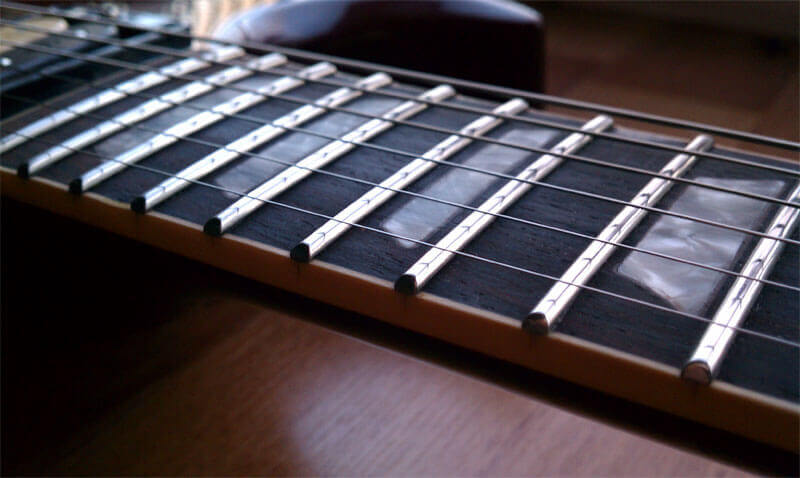
Steel guitar frets
Some people are unfortunate enough to have a nickel allergy, so stainless steel frets are an option for them. Stainless steel is extremely hard on tools and requires a lot of physical effort to level, shape and polish. This makes them more difficult to work with and therefore more expensive to install, in addition to their cost.
On the plus side, the stainless steel frets provide a super smooth surface to stretch the strings on and retain their shine indefinitely. Steel is also so strong that you may never need a refretting again, although it does affect the durability of the strings, especially for those using pure nickel strings because it is softer than steel.
The stainless steel frets, much harder, add bright to the tone of your guitar, thus, there are people who like that effect of a “more acoustic” audio, while on the contrary there are people who, on the contrary, avoid them because of the same reason.
Jescar anti-allergic guitar frets
Jescar ‘s EVO Ni-Free Gold fret is another nickel-free option. They are made from an alloy specially developed for people with nickel allergies. It is said to be stronger than nickel and very durable, but softer and easier to work with than stainless steel fret wire.
Conclusion on electric guitar frets
So, like many other things, frets are a matter of personal taste. But when you find the right size and material combination for you, it can greatly enhance your experience with your guitar, your playing, and your tone.
What is your ideal type of fret?
You can share opinions in our comments section below.






